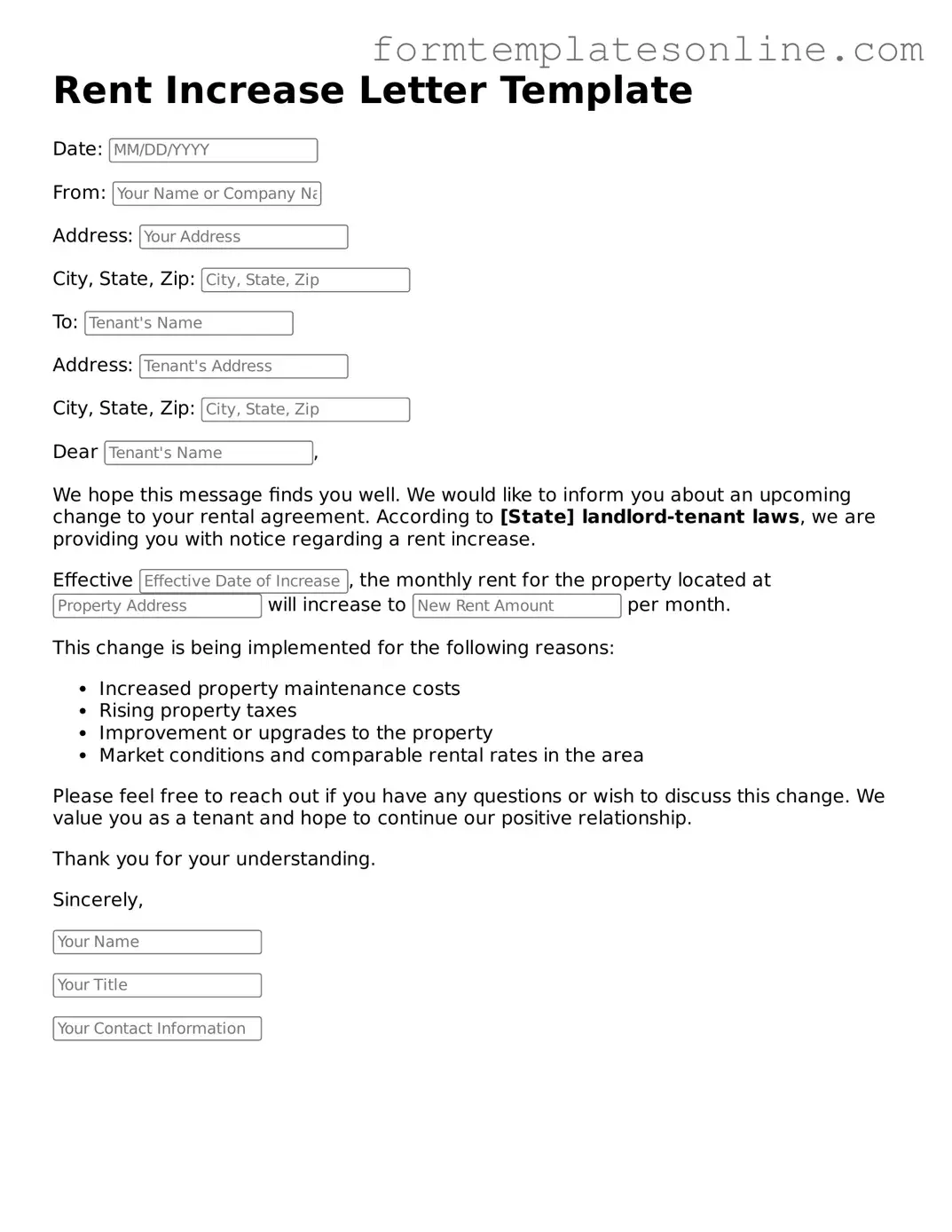What is a Rent Increase Letter?
A Rent Increase Letter is a formal notice from a landlord to a tenant informing them of an upcoming increase in rent. This letter typically outlines the new rent amount, the date the increase will take effect, and any relevant details regarding the change. It serves as a legal document that provides transparency and ensures that both parties are aware of the new rental terms.
Why do landlords issue Rent Increase Letters?
Landlords issue Rent Increase Letters for various reasons. Commonly, they may want to adjust rent to keep pace with inflation, cover rising property maintenance costs, or reflect improvements made to the property. By providing a Rent Increase Letter, landlords can communicate these changes clearly and maintain a professional relationship with their tenants.
How much notice must a landlord give before increasing rent?
The required notice period for a rent increase can vary by state and local laws. Generally, landlords must provide at least 30 days' notice for month-to-month leases. For longer leases, the notice period may be specified in the lease agreement itself. It's essential for landlords to check their local regulations to ensure compliance.
Can tenants dispute a rent increase?
Yes, tenants can dispute a rent increase if they believe it is excessive or unjustified. They should first review their lease agreement and local laws to understand their rights. Open communication with the landlord can often lead to a resolution. If necessary, tenants may seek legal advice or assistance from tenant advocacy organizations.
What information should be included in a Rent Increase Letter?
A well-crafted Rent Increase Letter should include several key pieces of information. This includes the current rent amount, the new rent amount, the effective date of the increase, and a brief explanation for the increase. Additionally, landlords should provide their contact information and encourage tenants to reach out with any questions or concerns.
Is there a standard format for a Rent Increase Letter?
While there is no universally mandated format for a Rent Increase Letter, it should be clear and professional. A standard letter typically includes the date, landlord’s address, tenant’s address, and a subject line indicating the purpose of the letter. Using a polite tone and clear language will help ensure that the message is received positively.
What should a tenant do if they do not receive a Rent Increase Letter?
If a tenant does not receive a Rent Increase Letter and notices a change in rent, they should first check their lease agreement for any clauses regarding rent increases. If the lease does not specify a process, the tenant should reach out to the landlord for clarification. Keeping a record of all communications is advisable in case of disputes.
Are there limits to how much a landlord can increase rent?
Yes, many states and municipalities have laws that limit how much a landlord can increase rent. These laws are often designed to protect tenants from sudden and excessive rent hikes. Landlords should familiarize themselves with local rent control laws to ensure that any increase they propose is within legal limits. Tenants should also be aware of these regulations to understand their rights.
